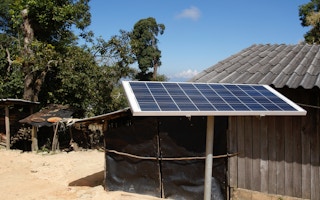Clean technology is vital to the challenge of preventing dangerous climate change. As negotiators prepare for make-or-break international talks, developments in China may help make a stronger global climate deal possible. The challenge of rolling out low emissions and climate adaptation technology is becoming ever more urgent. China’s role in the emergence of economical alternatives to carbon-intensive development in the Global South may be as important as its own commitments to global mitigation.
In the run-up to September’s New York climate summit which UN Secretary-General Ban Ki-moon hopes will galvanize support for climate action, new research has underlined the impact that unchecked climate change could have on some of the world’s most disadvantaged people. A report released this month by the Asian Development Bank warns that climate change would impose ‘prohibitively high’ and rising costs on the economies of South Asia, under a business-as-usual scenario. For the 1.4 billion people of South Asia - around a third of whom still live in poverty - and for other regions which are highly vulnerable to the effects of climate change, the challenge of rolling out low emissions and climate adaptation technology is becoming ever more urgent.
The ADB report, the latest in a long series of climate warnings, came as diplomats gathered in Bonn to examine how to harness technology to assist developing countries facing climate change. In 2010, in the wake of the troubled Copenhagen summit, the world’s climate negotiators established a Technology Mechanism to facilitate technology development and transfer to support climate mitigation and adaptation. Operating under the UN climate convention (UNFCCC), the Technology Executive Committee oversees this sprawling agenda. The Committee’s meeting last week in Bonn offered a snapshot of the challenges of mobilizing technology and finance to meet the climate challenge.
“
China’s role in the emergence of “economically attractive alternatives” to carbon-intensive development in the Global South may be as important as its own commitments to global mitigation.
The Committee’s work will feed into the end-of-year climate conference in Lima. In particular, diplomats in Lima will consider how to strengthen linkages between the Technology Mechanism and the UN’s climate finance bodies. The scope of the Convention’s financial mechanism is “still up for debate,” acknowledged Diann Black Layne from the UNFCCC’s Standing Committee on Finance. Amal-Lee Amin, from the environmental non-profit E3G, told the Committee that climate finance is a “very fragmented system,” with multiple finance providers, both within and outside the UN system, applying different criteria to developing country applicants. The possible creation of a “technology facilitation mechanism” as part of the UN’s post-2015 sustainable development agenda was discussed as a potential further complication, which could duplicate the UNFCCC’s work.
It is clear that little more than a year before the self-imposed deadline of the 2015 Paris climate summit, any new global climate deal necessarily remains a work in progress on multiple fronts. The complexity of this diplomacy was illustrated when one Committee member invoked Aristotle’s four causes (efficient, material, formal and final) to interpret the language of one negotiation outcome. But if the UN climate negotiation has become almost unworkably complex, it is still the one process with the legitimacy that comes from the participation of 195 countries.
There is also hope that technology development and commercialization outside the UN system is placing a more ambitious global climate deal within reach. Speaking this week at the University of Melbourne, economist Ross Garnaut noted China’s role in lowering “the costs of manufacturing the capital goods embodying low emissions technologies through large scale deployment” with, for example, the cost of manufacturing solar PV panels reduced by eighty percent in some factories.
Garnaut credits these cost reductions with changing the choices available to developing countries, by “demonstrating that it is now less costly to extend electricity to rural communities away from established grids through decentralized systems based on renewable hydro, solar, wind and biomass power.” Garnaut, a former Australian ambassador to China, argues that this model has proven influential in parts of South Asia and Africa. The result may be that China’s role in the emergence of “economically attractive alternatives” to carbon-intensive development in the Global South may be as important as its own commitments to global mitigation.
At ultimate issue is whether the sum total of these efforts can prevent dangerous climate change. During last week’s meeting, Committee vice-chair Kunihiko Shimada asked Professor Ottmar Edenhofer, an Intergovernmental Panel on Climate Change contributor, whether keeping the average global temperature increase to two degrees Celsius above pre-industrial levels was still ‘realistically possible’. That question will be waiting for world leaders when they meet in New York this September and in Paris next year.
Stephen Minas is a research associate with the Foreign Policy Centre, a UK-based think tank. This post originally appeared on Atlantic-Community.org.


















